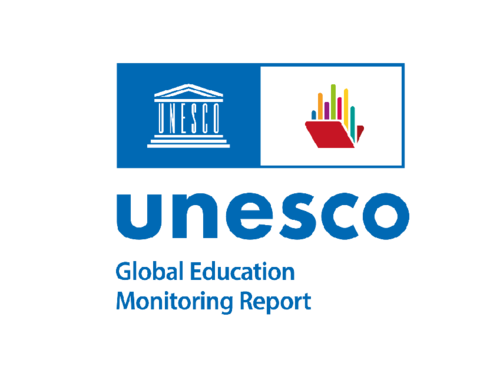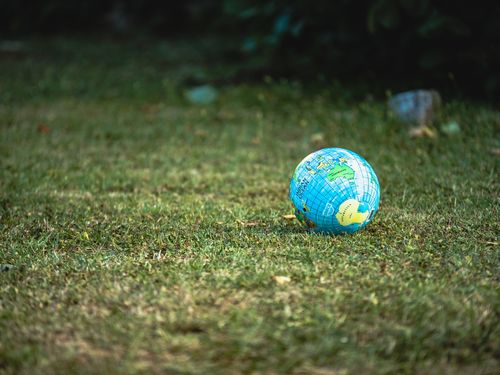Global Education Monitoring Report: Inclusion and Education: All means All
According to the latest 'Global Education Monitoring Report' (GEM Report), more than a quarter of a billion children and young people have no access to education. Millions of people are excluded within the education system because of their origin, identity, or disability and are particularly affected by the consequences of the COVID-19 pandemic.
Under the slogan 'All means All', this year's UNESCO Global Education Monitoring Report is dedicated to the topic of inclusion. The annual report serves to monitor progress in 209 countries towards achieving Sustainable Development Goal 4: "Ensure inclusive, equitable and quality education and lifelong learning opportunities for all by 2030."
The latest GEM Report shows that the exclusion of the most disadvantaged learners has worsened during the COVID 19 pandemic. 40% of the poorest countries did not support disadvantaged learners during the COVID-19 crisis. Less than 10% of countries have laws which help to ensure full inclusion in education.
Globally, poverty remains the critical barrier to educational success. 258 million children and young people are completely excluded from education. In low and middle income countries, young people from the richest 20% of households are three times more likely to complete lower secondary education than young people from the poorest families.
Identity, background, and empowerment determine educational opportunities. In ten low and middle income countries, children with disabilities were 19% less likely to achieve minimum reading proficiency than children without disabilities. Furthermore, in the United States, LGBTIQ+ students were nearly three times more likely to report staying away from school because they felt unsafe.
“To rise to the challenges of our time, a move towards more inclusive education is imperative”, said Audrey Azoulay, Director-General of UNESCO. “Rethinking the future of education is all the more important following the Covid-19 pandemic, which further widened and put the spotlight on inequalities. Failure to act will hinder the progress of societies.”1
New PEER platform provides an overview of legal frameworks worldwide
A new online platform was presented along with the Global Education Monitoring Report 2020: PEER (Profiles Enhancing Education Reviews) collects up-to-date information on laws and policies on inclusion and education from over 160 countries around the world. The new platform is designed to facilitate the mutual exchange of experience and encourage regional policy dialogue. PEER shows that many countries still practice educational segregation, which reinforces stereotyping, discrimination, and alienation. Laws in a quarter of all countries require children with disabilities to be educated in segregated settings. In Latin America and the Caribbean and Asia, the figure is over 40%.
Two African countries still deny pregnant girls access to school, 117 countries allow child marriage, while 20 countries have not yet ratified the International Labour Organization (ILO) Convention against child labour. In several Central and Eastern European countries, Roma children are segregated in regular schools. In Asia, displaced people, like the Rohingya, are taught in parallel education systems. In OECD countries (Organisation for Economic Co-operation and Development), more than two-thirds of immigrant students attend schools where they make up at least 50% of the student population, reducing their chances of academic success.
Trained teachers as the key to successful inclusion
Many education systems are built on the assumption that all people have the same learning needs. This is evidenced, among other things, by the fact that only 41 countries have officially recognised a form of sign language to date, including Austria. Societal attitudes also place limits on inclusion. For example, the Global Education Monitoring Report notes that 59% of all parents in Hong Kong and 15% in Germany fear that children with disabilities would disrupt the learning of other students.
Teachers play a particularly critical role in implementing inclusion in education. They are the key to greater inclusion in everyday school life, but they require the necessary tools to achieve this. For example, a quarter of all teachers in 48 countries surveyed said they would like more training on teaching students with special needs.
Diversity as a strength
“Covid-19 has given us a real opportunity to think afresh about our education systems,” said Manos Antoninis, Director of the Global Education Monitoring Report. “But moving to a world that values and welcomes diversity won’t happen overnight. There is an obvious tension between teaching all children under the same roof and creating an environment where students learn best. But, COVID-19 has showed us that there is scope to do things differently, if we put our minds to it.”2



![[Translate to EN:] [Translate to EN:]](/fileadmin/_processed_/9/6/csm_education_2030_logo-page-001_7a6aecad7b.jpg)




![[Translate to EN:] Publikationen zu Bildung 2030](/fileadmin/_processed_/8/a/csm_Publikationen3_af52a7496d.jpg)